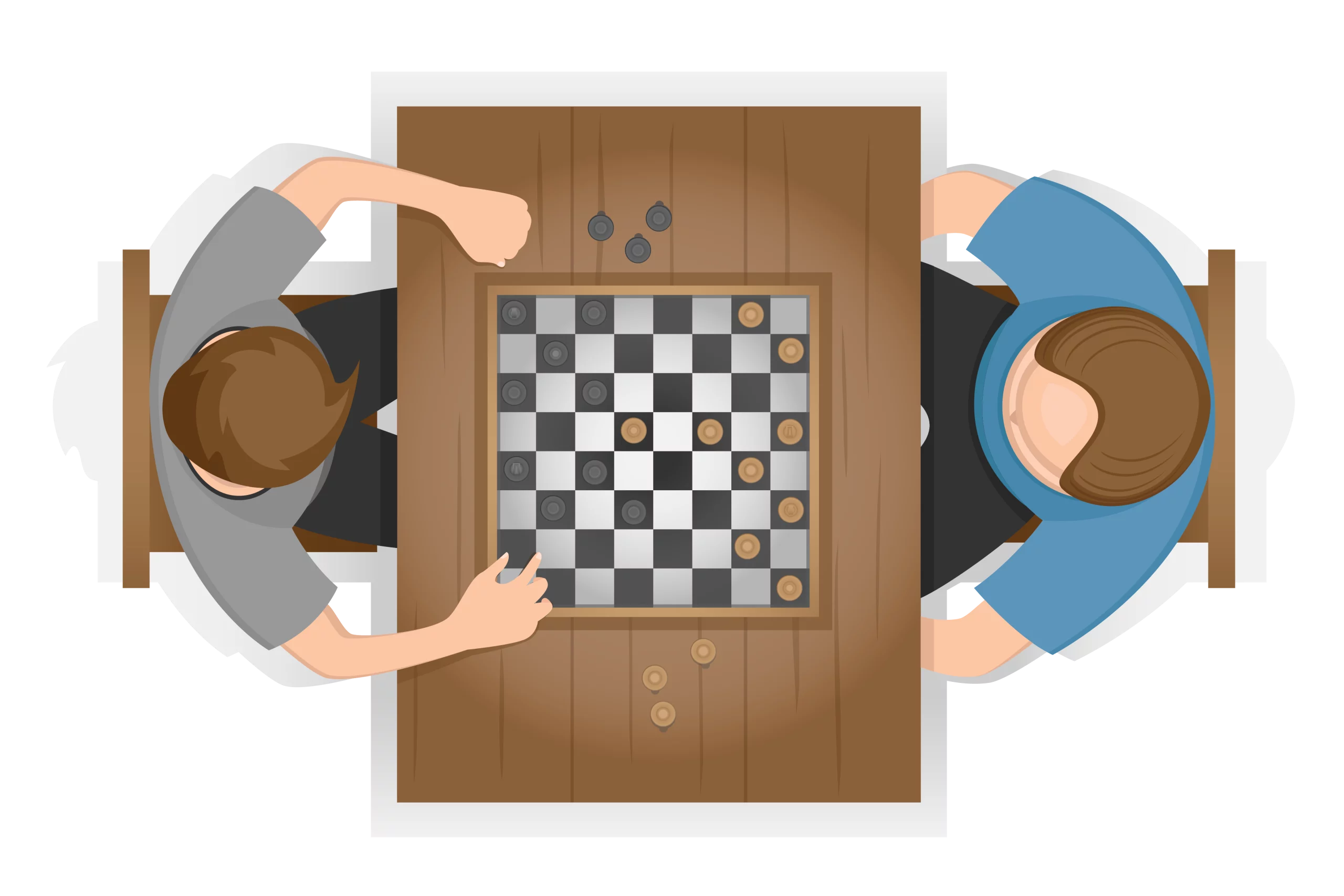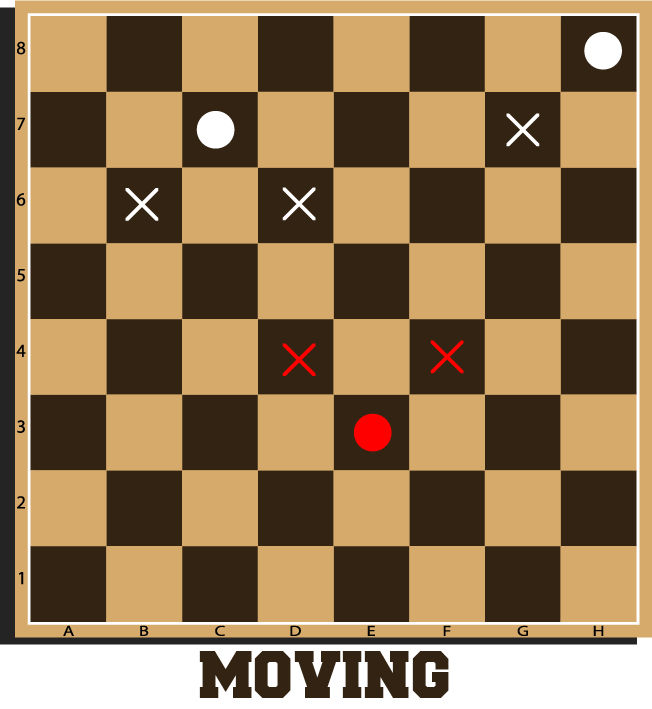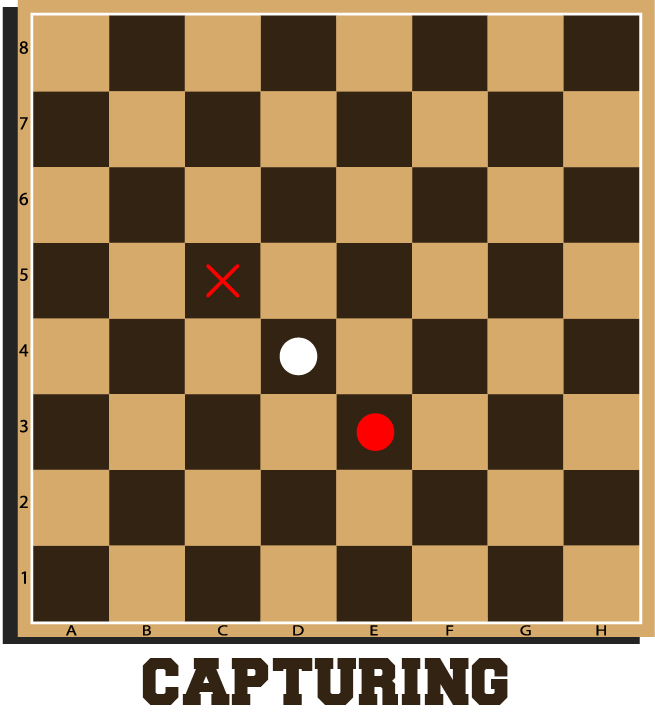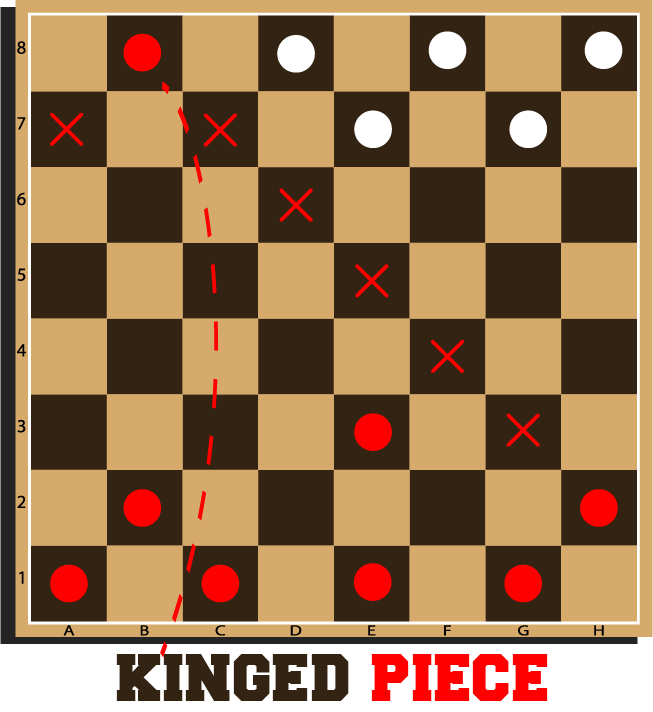
I. Introduction
Checkers, a popular strategic board game, is not merely a test of luck but also a battle of wits. In order to gain an advantage over your opponent and secure victory .One key aspect of checkers tactics is the ability to create and exploit weaknesses in your opponent’s position. By identifying vulnerabilities and capitalizing on them, you can gain a strategic edge and increase your chances of success.
In this guide, we will explore the art of creating and exploiting weaknesses in checkers. We will delve into the fundamental concepts, techniques, and strategies that will enable you to analyze your opponent’s position and identify areas of weakness. Moreover, we will discuss how to capitalize on these weaknesses by executing precise moves and maneuvers.
II. Understanding the Basics of Checkers
Before delving into the tactics of creating and exploiting weaknesses, it is essential to have a solid understanding of the basics of checkers. This section will provide an overview of the game rules, board setup, basic moves, and capturing mechanics, as well as introduce you to strategic concepts in checkers.
A. Overview of the Game Rules and Board Setup
- Checkers is played on an 8×8 checkered board, alternating between dark and light squares.
- Each player begins with 12 pieces, typically differentiated by color, placed on the dark squares of the three rows closest to them.
- The goal is to capture all of your opponent’s pieces or block them in such a way that they cannot make a legal move.
B. Explanation of Basic Moves and Capturing Mechanics
Pieces can only move diagonally on the dark squares. Regular moves involve moving a piece one diagonal space forward.

Capturing is done by jumping over an opponent’s piece, removing it from the board. Multiple captures in a single turn are allowed if they are in a consecutive diagonal line.

Kings, achieved by reaching the opponent’s back row, have enhanced mobility and can move and capture both forward and backward.

C. Introduction to Strategic Concepts in Checkers
- Piece Development: The initial setup and efficient development of your pieces play a crucial role in establishing a strong position.
- Control of the Center: Occupying and controlling the central squares of the board provides a strategic advantage.
- King Promotion: Strategically promoting your pieces to kings enhances their mobility and increases their value.
- Tempo and Initiative: Maintaining tempo, or maintaining control over the flow of the game, allows you to dictate the pace and pressure your opponent.
- Board Awareness: Being aware of the overall board position and potential future moves helps in making informed tactical and strategic decisions.
Now that you have a grasp of the basics, let’s move on to the next section, where we will explore the art of recognizing weaknesses in your opponent’s position.
III. Recognizing Weaknesses in Your Opponent’s Position
To gain an advantage in checkers, it is crucial to identify weaknesses in your opponent’s position. These weaknesses can be exploited to create tactical opportunities and strategic advantages. In this section, we will explore various aspects of your opponent’s position that you should observe and analyze to recognize vulnerabilities effectively.
A. Identifying Vulnerable Pieces or Unprotected Areas
- Look for pieces that are exposed and not adequately protected by neighboring pieces.
- Identify any isolated pieces that are far away from their supporting pieces, making them vulnerable to attacks.
- Take note of any potential weak points or gaps in your opponent’s position where you can infiltrate and create threats.
B. Analyzing Potential Weaknesses in Pawn Structure
- Examine your opponent’s pawn structure for any weaknesses, such as backward pawns or isolated pawns that are difficult to defend.
- Identify pawn chains that are susceptible to disruption, as breaking them can create imbalances in your opponent’s position.
- Pay attention to pawn islands, which are groups of pawns separated from each other, as they can be targeted and weakened.
C. Recognizing Positional Imbalances and Imbalances in Material
- Assess the overall material balance, considering the number and types of pieces each player possesses.
- Observe imbalances in piece coordination, where some pieces might be more active or better positioned than others.
- Look for positional weaknesses in your opponent’s structure, such as overloaded defenders or poorly placed pieces.
By carefully evaluating your opponent’s position, you can pinpoint weaknesses that can be exploited to gain an advantage. Recognizing vulnerable pieces, weaknesses in pawn structure, and imbalances in position and material will help you identify the most opportune moments to strike and create tactical opportunities.
IV. Creating Weaknesses in Your Opponent’s Position
Creating weaknesses in your opponent’s position is a fundamental aspect of checkers tactics. By strategically maneuvering your pieces and executing precise moves, you can disrupt their structure, force unfavorable responses, and generate vulnerabilities. In this section, we will explore various techniques for creating weaknesses in your opponent’s position.
A. The Art of Creating Tactical Threats and Forcing Opponent’s Moves
- Utilize tactical threats to pressure your opponent into making defensive moves.
- Create multiple threats simultaneously to overwhelm your opponent and force them to make concessions.
- Exploit pinned or overloaded pieces by attacking them with multiple forces or tactics.
B. Initiating Pawn Breaks to Disrupt Opponent’s Structure
- Identify pawn chains or structures that are vulnerable to disruption.
- Execute pawn breaks by sacrificing your own pieces strategically to open up lines and weaken your opponent’s position.
- Exploit the resulting weaknesses by occupying key squares or launching further attacks.
C. Sacrificing Pieces Strategically to Induce Weaknesses
- Consider sacrificing a piece to lure your opponent into a compromised position or to open up avenues for your other pieces.
- Sacrifice a piece to create imbalances in your opponent’s position, forcing them to make difficult choices.
- Capitalize on the weaknesses created by the sacrifice to gain an advantageous position or launch further attacks.
By employing these techniques, you can actively create weaknesses in your opponent’s position, destabilizing their defenses and opening up opportunities for exploitation. Remember to carefully assess the potential risks and rewards of each move and consider the long-term implications of the weaknesses you create.
In the next section, we will discuss how to effectively exploit the weaknesses you have identified and created in your opponent’s position.
V. Exploiting Weaknesses In Your Opponent’s Position
Once you have identified and created weaknesses in your opponent’s position, the next step is to effectively exploit them to gain a decisive advantage in checkers. In this section, we will explore strategies and tactics to capitalize on the weaknesses and turn them into tangible benefits.
A. The Importance of Planning and Anticipating Responses
- Plan your moves strategically, considering how your opponent is likely to respond to the weaknesses you have created.
- Anticipate possible counter-moves and prepare your subsequent actions accordingly.
- Maintain flexibility in your plans, ready to adapt to unexpected developments.
B. Utilizing Tactical Maneuvers to Exploit Weaknesses
- Coordinate your pieces to attack the vulnerable spots in your opponent’s position.
- Look for tactical combinations, such as forks, pins, skewers, and other forcing moves, to exploit the weaknesses.
- Aim to gain material advantages, positional dominance, or threats that force concessions from your opponent.
C. Executing Effective Piece Exchanges to Maintain an Advantage
- Seek opportunities for favorable piece exchanges that further weaken your opponent’s position.
- Trade off your less active or less valuable pieces for your opponent’s stronger or more strategically positioned ones.
- Strive to maintain an overall advantage in material and maintain control over the position.
D. Assessing the Endgame and Securing Victory
- Transition into the endgame phase once you have gained a significant advantage.
- Convert your positional and material advantages into a winning endgame, employing sound endgame principles.
- Focus on promoting your pawns to kings, creating passed pawns, and orchestrating favorable piece placements to secure victory.
Analysing the weaknesses in your opponent’s position effectively, you can press your advantage, increase your control over the game, and pave the way for a successful outcome. Remember to stay vigilant, adapt to your opponent’s responses, and make calculated moves that maximize the benefits derived from the weaknesses you have created.
VI. Advanced Tactics and Strategies
In checkers, mastering advanced tactics and strategies can give you a significant edge over your opponent. These techniques go beyond the basics and involve deeper analysis, foresight, and creative thinking. In this section, we will explore advanced tactics and strategies that will elevate your checkers gameplay.
A. Advanced Checkers Tactics for Creating and Exploiting Weaknesses
- Double and triple threats: Create simultaneous threats to force your opponent into difficult positions and induce weaknesses.
- Clearance sacrifices: Sacrifice a piece strategically to clear a path or create opportunities for your other pieces.
- Zugzwang: Manipulate the position in such a way that your opponent is forced into a disadvantageous move.
- Tempo plays: Make moves that force your opponent to respond in a specific way, allowing you to maintain the initiative.
B. Techniques for Luring Opponents into Traps and Positional Disadvantages
- Baiting: Present enticing opportunities for your opponent to make a seemingly advantageous move, only to fall into a trap.
- Restricting options: Control key squares or limit your opponent’s mobility, forcing them into a disadvantageous position.
- Overloading defenders: Overwhelm a defender by creating multiple threats that they cannot adequately defend against.
- X-ray attacks: Use pieces to attack through other pieces, exploiting weakly defended targets.
C. Understanding Strategic Endgame Principles to Secure Victory
- Opposition: Position your kings to maintain the opposition, denying your opponent space and control.
- King activity: Activate your king and centralize it to exert more influence and support your pawns.
- Triangulation: Move your pieces in a triangular pattern to gain a move advantage in the endgame.
- Philidor position and other key endgame setups: Familiarize yourself with essential endgame positions to secure victory.
D. Analysis and Calculation
- Calculation and visualization: Develop your ability to calculate multiple moves ahead and visualize different scenarios.
- Pattern recognition: Study patterns and positions that frequently occur in checkers to enhance your decision-making.
- Post-game analysis: Analyze your games to identify mistakes, missed opportunities, and areas for improvement.
By incorporating these advanced tactics and strategies into your gameplay, you will have a deeper understanding of the game and the ability to outmaneuver your opponents. Remember to practice these techniques, continually analyze and learn from your games, and strive for improvement.
VII. Practice and Improvement
Mastering checkers tactics and strategies requires consistent practice and a commitment to improvement. In this section, we will emphasize the importance of practice and provide guidance on how to enhance your skills in checkers.
A. Importance of Practice
- Regular practice allows you to internalize tactics, strategies, and patterns, making them instinctive during gameplay.
- Practice helps improve your calculation skills, decision-making abilities, and ability to recognize weaknesses and opportunities.
- By practicing regularly, you develop a deeper understanding of the game and gain confidence in your abilities.
B. Analyzing Game Outcomes
- Review your games, whether played against opponents or against a computer, to identify strengths, weaknesses, and areas for improvement.
- Analyze critical positions and moves to understand the consequences of different choices.
- Seek feedback from stronger players or use computer analysis tools to gain insights into your gameplay.
C. Resources for Studying Checkers Tactics and Strategies
- Books: Explore books on checkers tactics and strategy written by renowned players and experts.
- Online tutorials and videos: Utilize online platforms that offer tutorials, videos, and lessons on checkers tactics and strategies.
- Checkers software and mobile apps: Make use of checkers software and mobile apps that provide training features, puzzles, and AI opponents for practice.
D. Continuous Improvement
- Set goals for your checkers improvement, whether it’s reaching a certain rating, mastering specific tactics, or understanding advanced strategies.
- Seek out stronger opponents to challenge yourself and learn from their gameplay.
- Join checkers clubs, forums, or communities to engage in discussions, share experiences, and learn from fellow enthusiasts.
Remember, improvement in checkers, like any skill, takes time and dedication. Practice regularly, analyze your games, seek out resources, and embrace a growth mindset to continuously improve your gameplay.
VIII. Conclusion
Checkers tactics revolve around the art of creating and exploiting weaknesses in your opponent’s position. By recognizing vulnerabilities, executing strategic moves, and capitalizing on weaknesses, you can gain a significant advantage in the game.
By incorporating these concepts into your gameplay and honing your skills, you can elevate your performance in checkers and enjoy a greater chance of success. Remember, the ability to create and exploit weaknesses is a fundamental aspect of strategic gameplay, enabling you to outmaneuver and outwit your opponents.
Now, armed with this knowledge, go forth and apply these tactics in your next checkers game. May your moves be sharp, your strategies be sound, and your victories be plentiful.
